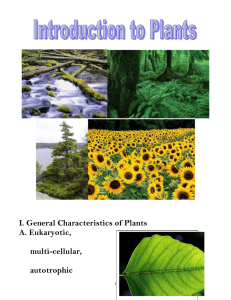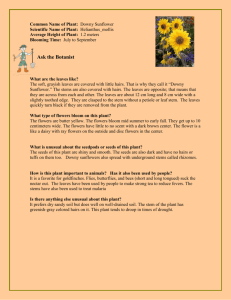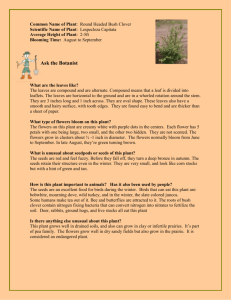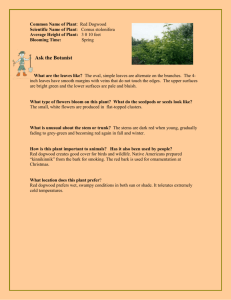Butterweeds
advertisement
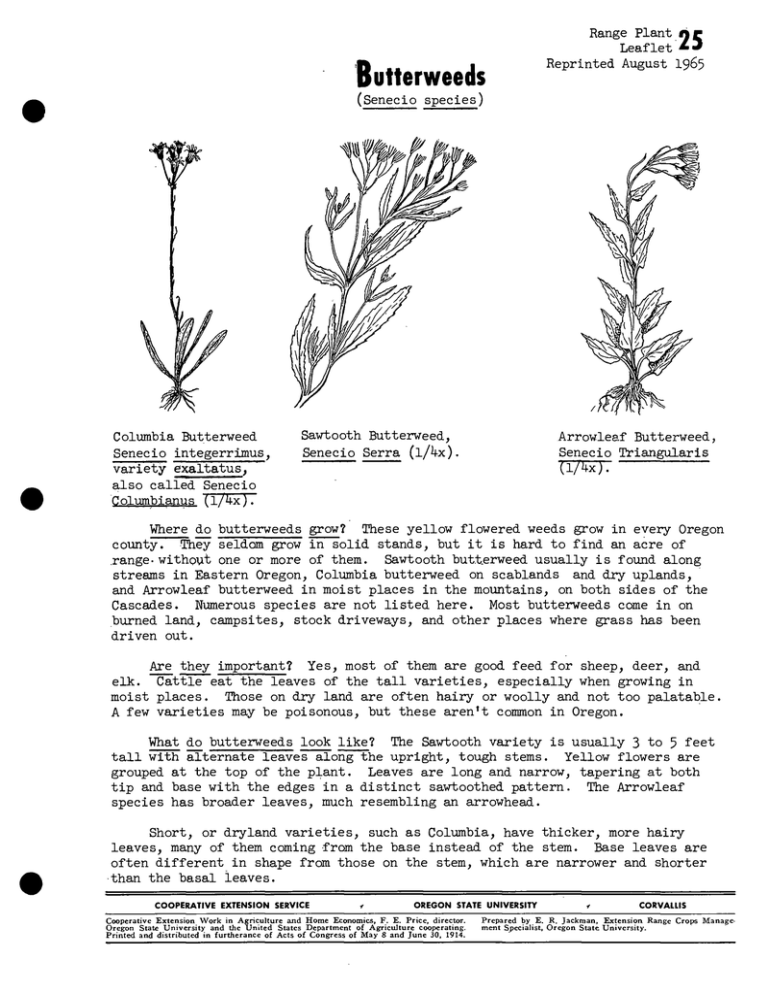
Butterweeds Range Plant tir Leaflet * 0 Reprinted August I965 (Senecio species) Columbia Butterweed Senecio integerrimus, variety exaltatus, also called Senecio Columbianus (l/4x). Sawtooth Butterweed, Senecio Serra (l/kx) Arrowleaf Butterweed, Senecio Triangularis (1/^). Where do butterweeds grow? These yellow flowered weeds grow in every Oregon county. They seldom grow in solid stands, but it is hard to find an acre of Sawtooth butterweed usually is found along .range- without one or more of them streams in Eastern Oregon, Columbia butterweed on scablands and dry uplands, and Arrowleaf butterweed in moist places in the mountains, on both sides of the Cascades. Numerous species are not listed here. Most butterweeds come in on burned land, campsites, stock driveways, and other places where grass has been driven out. Are they important? Yes, most of them are good feed for sheep, deer, and elk. Cattle eat the leaves of the tall varieties, especially when growing in moist places. Those on dry land are often hairy or woolly and not too palatable. A few varieties may be poisonous, but these aren't common in Oregon. What do butterweeds look like? The Sawtooth variety is usually 3 to 5 feet tall with alternate leaves along the upright, tough stems. Yellow flowers are grouped at the top of the plant. Leaves are long and narrow, tapering at both tip and base with the edges in a distinct sawtoothed pattern. The Arrowleaf species has broader leaves, much resembling an arrowhead. Short, or dryland varieties, such as Columbia, have thicker, more hairy leaves, many of them coming -from the base instead of the stem. Base leaves are often different in shape from those on the stem, which are narrower and shorter •than the basal leaves. COOPERATIVE EXTENSION SERVICE OREGON STATE UNIVERSITY Cooperative Extension Work in Agriculture and Home Economics, F. E. Price, director. Oregon State University and the United States Department of Agriculture cooperating. Printed and distributed in furtherance of Acts of Congress of May 8 and June 30, 1914. CORVALLIS Prepared by E. R. Jackman, Extension Range Crops Management Specialist, Oregon State University. The name comes from the butter color of the flowers. The Latin name, Senecio, means "old man," probably because butterweeds have white beards on the tips of the seeds, much like the little parachutes on thistle seeds. At the base of each flower is a group of "bracts," or small leaf-like parts that grow upright in the shape of a bell and surround the flower head. This plant belongs to the sunflower or daisy group, called "composites" because the flower is composed of a whole group of little flowers, made up of the center, or "disk" flowers and the outside, or "ray"^ flowers. Both kinds produce seeds in the butterweeds. Description: Length of life—Perennial. Height--Fram 6 inches to 6 feet. Flowers--Yellow, clustered at the top of the plant, usually giving a flat top appearance. Leaves—Alternate (frequently) with sawtooth margins. Method of spread--Seeds, spread by wind, like thistledown. Stem—Only one to a plants not branched. Do these plants look like others? Yes. Tall forms are often called "false goldenrod." Goldenrod flowers are borne for some distance along the stem, whereas butterweed flowers are in clusters at the top. Goldenrod seeds are much shorter. Ragwort resembles it, but has leaves divided nearly to the center, like carrot leaves, whereas the butterweeds are only sawtoothed.> The short forms have several "look-alikes," but the bracts beneath the butterweed flowers are only in A single row, while on many of the other plants the bracts are shingled--that is, several rows overlap like shingles. Look for the single row on butterweeds. Seed of butterweed (ix). Seed of •goldenrod (ix). Seed of dandelion (1*).


